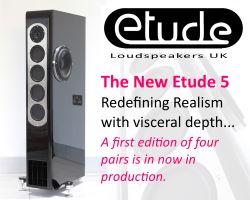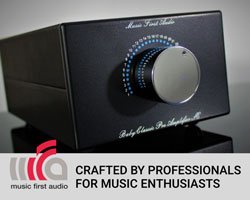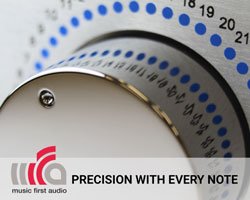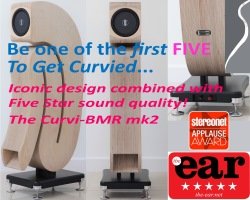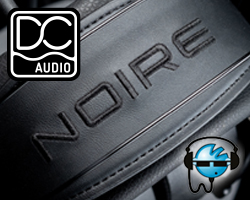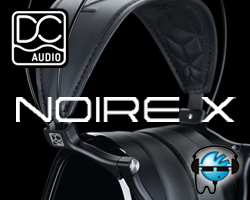VON GAYLORD AUDIO HARMONY TUBE PREAMPLIFIER REVIEW
Janine Elliot takes a listen to the Von Gaylord Audio Harmony Pre-amplifier costing £5000.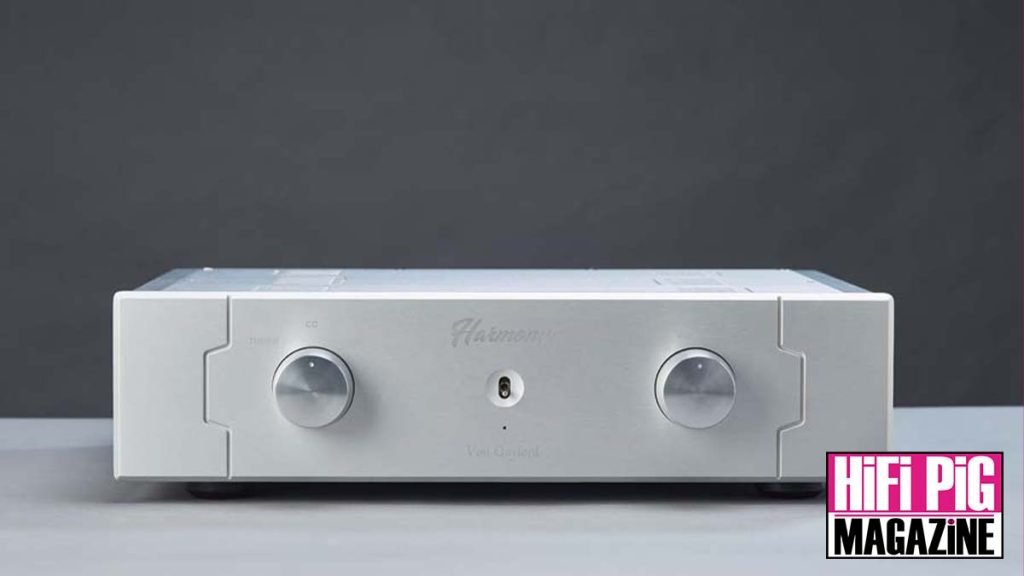
Von Gaylord Audio might not be a name that you know, but this company have certainly been creating an excellent name for themselves particularly with innovative tube-based products over the past few years, a company I have been keen to see at shows around the world.
The Harmony, on review here, is a tube preamplifier using a pair of 6SN7 tubes and coming in at £5000 all the way from sunny West Sacramento, California, USA.
VON GAYLORD AUDIO COMPANY HISTORY
The company’s history goes like this; Von Gaylord had been interested in audio for many years but was never happy with what he could buy off the shelf, so he took it upon himself to start building his own products. But only when he met Ray Leung did he consider setting up a company. The San Francisco tube electronics company called ‘Legend Audio Designs’ was formed in 1994 by Von Gaylord and Ray Leung. Starting in a small way it soon morphed into something a lot bigger producing complete system components. Due to a legal dispute with a speaker manufacturer also with the name “Legend Audio” and also based in San Francisco, it was changed in 2002 to Von Gaylord Audio in respect to its original designer Von Gaylord. Around 8 years ago Von Gaylord retired officially from the company moving back to Germany, leaving Ray Leung as the sole designer and residing president. Like many audio CEOs, Leung is also a musician; a trained classical guitarist who still plays today. His motto is not to settle or try to compromise. “We strive to have all of the musical elements of a great system: dynamics, warmth, transparency, liquidity, lifelike-imaging, sound staging, and most importantly, that audiophile intangible called ‘musicality’. Von Gaylord Audio has now been designing products for over 20 years.
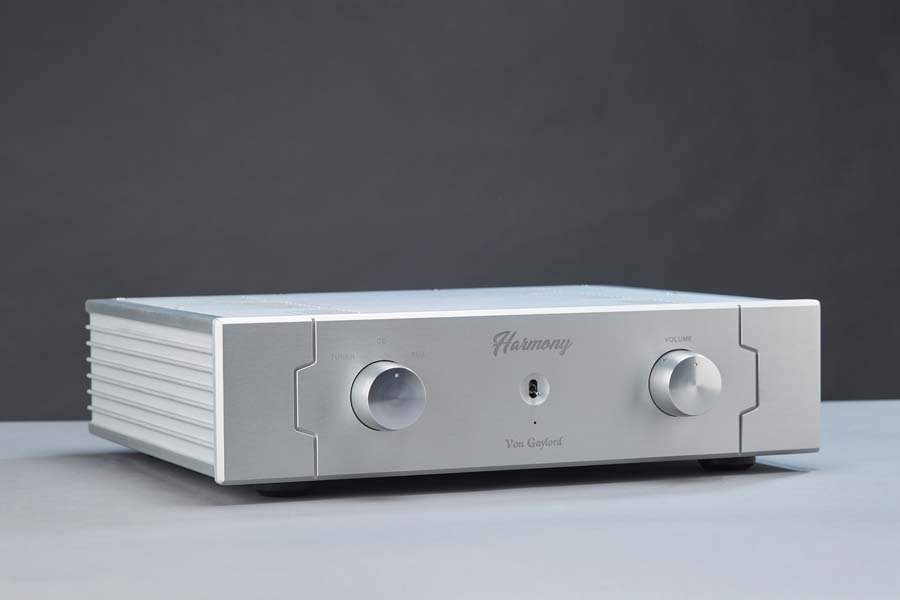
A simple layout hides quality components inside
THE VON GAYLORD HARMONY PRE
The company is renowned for tube products, for example their $200,000 Uni Sea Liquid Cooled power amp, and the Harmony doesn’t change this formula and is a valve pre using the 6SN7 tubes and represents their first ‘one-box’ preamplifier. The single box is due to distributors from Europe and Asia requesting a single-box preamplifier for their market. It also needed to be straightforward in design and take up less rack space. This was quite a challenge for Ray to design a preamplifier incorporating a high-voltage power supply and signal path in one box, and this design process took about a year to come to fruition. Ray believes that a valve preamp and valve power is the best combination to create the best integration of sound.
The unit is a pure Class-A affair, and in common with their other preamplifiers only has three inputs (CD, Tuner, Aux); there are no digital or phono-stages in sight here. The rear has RCA connectors for inputs and two RCA line-outs to your power amp.
Internal cabling uses their Premium Legend Silver Wire and silver solder, and the entire signal path is point-to-point hand-wired and then enclosed in a steel chassis. As Ray told me, there are two reasons for the inner frame: “First, the components are potted with fiberglass filler to ensure a stable temperature, the potting material working as a cooling system to help stabilize the temperature. In an audio system, heat variation can result in sound inconsistencies, so this design minimizes temperature variations and changes in component values that may affect the sound”. Secondly, this system also reduces vibration. “With respect to vibration elimination, the isolated inner chassis provides an extra barrier to ensure that when distortion goes through the outer enclosure, it will not affect the audio path inside the cabinet”.
There are around 10 different manufacturers of components used in the product; Ray’s philosophy is to use the best components (Capacitors, Resistors, Wire, and Soldering) in order to achieve the best sound. Whilst the components are some of the best (capacitors from Solen, Supersound, Wimmer, and others), this can lead to them introducing their own sound signature due to their typically strong individual character. Ray told me he has found it necessary to take great care in selecting and combining these various components in order to assure an optimal final sound.
The front panel is minimalist; a rotary knob on the left to select the three sources, a central off/on switch which lights up blue when ‘on’, a volume control on the right, and a tiny central hole for the remote-control sensor. Similarly, the cute little aluminium remote is sparse, to the extent of just saying “Von Gaylord” and nothing else on it to explain the left/right, up/down, and centre buttons. At the rear (as mentioned) there are RCA input and output sockets, but alas for a £5000 preamp, there are no XLRs. Luckily for me, the Harmony – and all VGA products – are run in 100 hours before heading off to the customer.
This is an excellent-looking product with great looks and excellent construction, available in silver. Customers can try the product for two weeks, and if not satisfied they are welcome to send it back, just paying the postage.
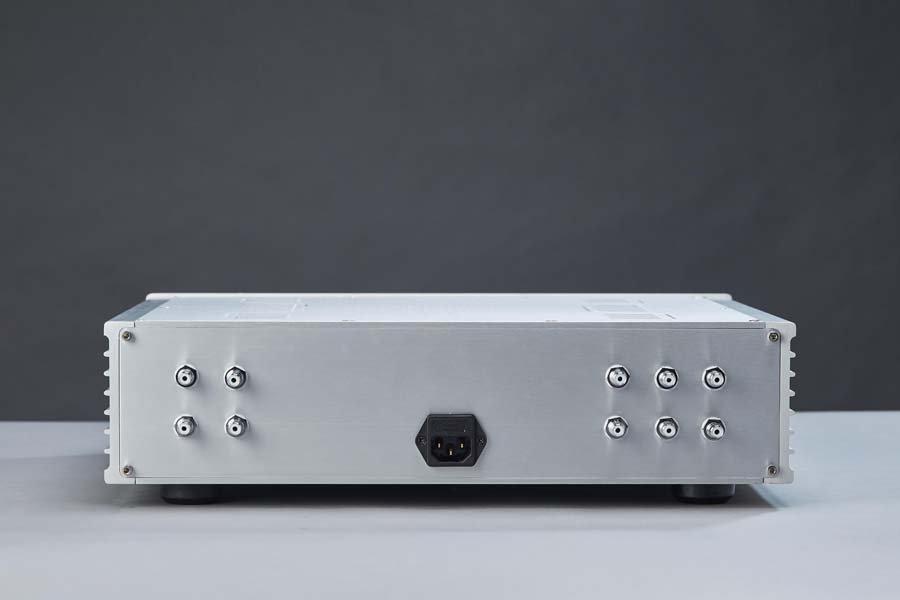
Three inputs and 2 outputs all are all on RCA
THE SOUND OF THE VON GAYLORD HARMONY PRE
Von Gaylord (VG) wanted me to review a complete system. I can see why, though the lack of space for the boxes at Chez Janine, let alone the HiFi, made it impractical. The Harmony arrived with Return of the Legend 7000s interconnects, which I used between the Harmony and my valve-based Synthesis Roma 98DC power-amp, and a Chinchilla Mk ii powercord. Interconnects and cables are designed and manufactured in-house.
Reviewing was from vinyl, FLAC, and DHD digital sources, and from my Ferrograph and Teac reel-to-reel recorders. VG suggests a 20-minute run-in each time you listen, which was certainly very true here and I guess this gives the couple of tubes time to warm up. Straight from power up the pre didn’t sound at its best, but waiting twenty minutes or more before reviewing the sound opened up with better bass-end and overall detail. I was also aware of the way the combination worked so well together, with a great spatial soundstage and including 3D space between the musicians. My Synthesis KT88 tube power amp does this so well, but in combination with the preamp just improved things further. Though I am personally happy with my passive TVC preamp, the Harmony was certainly very much in harmony with me throughout the review; excellent musical mid-range from violins and voices and a punchy bass end. Just at times did I wish for a greater extension at the very bottom. There was excellent detail to the music as well as an honest tonality that made the music so believable.
Playing Spark’s “Something For The Girl With Everything” from their ‘Plagiarism’ album was not quite like their original single; the slushy strings in this newer version of the famous song were just so mellow and musical I was persuaded to play even more from the album. There was a beautiful 3D soundstage and excellent midrange. The latter continued with Pavlo Beznosiuk’s take on the Bach Toccata and Fugue (24/192). This performance was very open and detailed, but still highly musical with lush tones from the excellent performer. This preamp has lots of reserve so it never ever felt overdriven or underpowered.
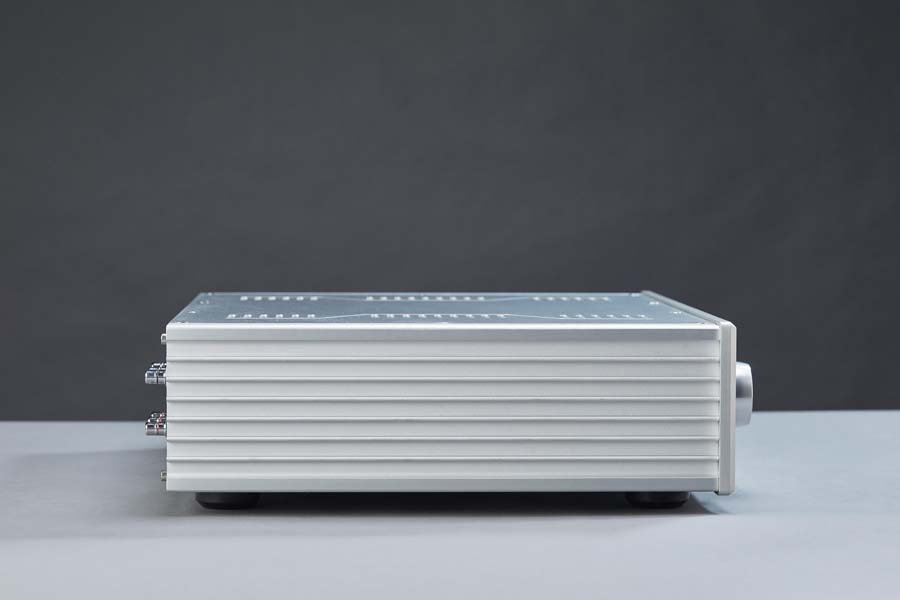
And a view from the side of the Von Gaylord Harmony pre
The violin concerto No 4 in D from Mozart (Mariame Thorsen) was again a great sounding performance, though not quite as musical as I have heard from a few other more expensive combinations. Turning away from solo violin to Bozza’s ‘Children’s Overture’ (Band of the Norwegian Armed Forces) the bass and tops were crisp and uncoloured, but the extreme bass was a little lacking again, and it all sounded a little too controlled in this highly amusing piece. Britten’s ‘Simple Symphony’ is a lovely tonal work written in Lowestoft when he was only 20 and using material he had originally composed as a child, and this performance (Trondheim Solistene) was bold when it needed to be and equally relaxed at other moments, such as the “Sentimental Sarabande” third movement. Whether thin or thick textures, the Harmony was a great performer.
Clare Teal’s ‘Don’t Talk’ got the music swinging with lots of tight percussion, vocals, and brass band in “Messin’ With Fire”. “When in Rome” was a little bit more laid back, but equally enjoyable. Clare’s voice sang beautifully through the Harmony. In all the music I played there was an excellent musicality, especially midrange vocals and violins, and whether pop, rock, jazz, classical, or ethnic, I was met with an engaging and believable performance. On vinyl, Dave Brubeck’s ‘A Cut Above’ is an iconic direct-cut-disc album made in limited quantity and in a unique way with an inverted disc cutter, and the performance from the VG was on par with the best at this price point in terms of musicality and openness.
Finally, I was lucky to play the very new Rimsky Korsakov’s ‘Scheherazade’ on reel-to-reel from Chasing the Dragon. Look out for the review on this great album, soon. I used my Ferrograph Logic 7 and also my 4-channel A3440 from Teac, a machine I have just brought back to life after 20 years of storage by its original owner. Using tracks 1 and 4 on the Teac or the excellent two-track Ferrograph, both machines gave a very weighty performance in the bass when needed, and when the fairytale Scheherazade theme was being played by the violins or flute I was wafted away into pure fantasy. This work is all about a sultan called Shahryar who was betrayed by his first wife and so decided to marry a new virgin every day and have them beheaded the next. When it came to Scheherazade, she kept reading him a new story at night and didn’t conclude it before dawn broke, so she escaped death for 1001 nights. By that time he had renewed his trust in women, so spared her life. I had equal trust in this performance, though it didn’t take me 1001 nights. However, only the deepest bass wasn’t quite as I wanted, even on my Ferrograph which has excellent bass performance. Mids were superb as were the tops – for example, the triangle or brass outbursts. These were pin sharp. The beautiful third movement has a very clear triangle, tambourine, and snare drum, giving an almost 3D performance, being placed toward the back of the orchestra space. This movement was highly engaging through the VGA.
CONCLUSION
This was a highly engrossing product, working so well with my KT88s. Everything was so well controlled and nothing sounded out of place. Mids were sublime and the top end was pin sharp and fast. If you listen to the Harmony, be sure to let it run in 20 minutes before being serious about its performance; that 20 minutes will persuade you to listen for hours!
AT A GLANCE
Build Quality:
Very well put together, only that the stick-on rubber of the feet can come off when sliding the product into place on your HiFi stand
Sound Quality:
Exceptionally musical performance and working with all types of music
Value For Money:
£5000 gets you a lot of music per pound, so it is highly recommended, especially if your power amp is also valve-based
We Loved:
Excellent soundstage
Mid-frequency detail
Transparency
Expressive melody
Engaging sound
We Didn’t Love So Much:
Some might not like there being no XLR balanced inputs and output
Elevator Pitch Review: I had seen Von Gaylord products before, but had never heard them. This was a good chance to see why they are rated so well. Combined with my own valve power this was an excellent marriage giving a warm but detailed sound and a soundstage that just made me want to keep on listening.
Price: £5000

Janine Elliot
Review Kit: Pre-Audio GL-1102N/Audio Technica AT33sa (turntable/cartridge); Manley Steelhead (phono stage); Krell KPS20i (CD); Ferrograph Logic7, Teac 3440, Nagra iv-sj, (reel to reel); Astell and Kern SE180/iFi xDSD (DAP/streamer) Synthesis Roma 98DC (amplification); Esprit and Townshend cables, Coppice Audio stand and Townshend rack.
SPECIFICATIONS
Class A
Inputs for cd, tuner, aux
Ported modular design
Premium internal Von G silver wire
Frequency Response 10Hz-85kHz
>102dB S/N
Input impedance 1k ohms
Input sensitivity 120mV, 2V out, 30dB gain
17”w x 4.5” h x 13.5”d
45lbs weight

















































